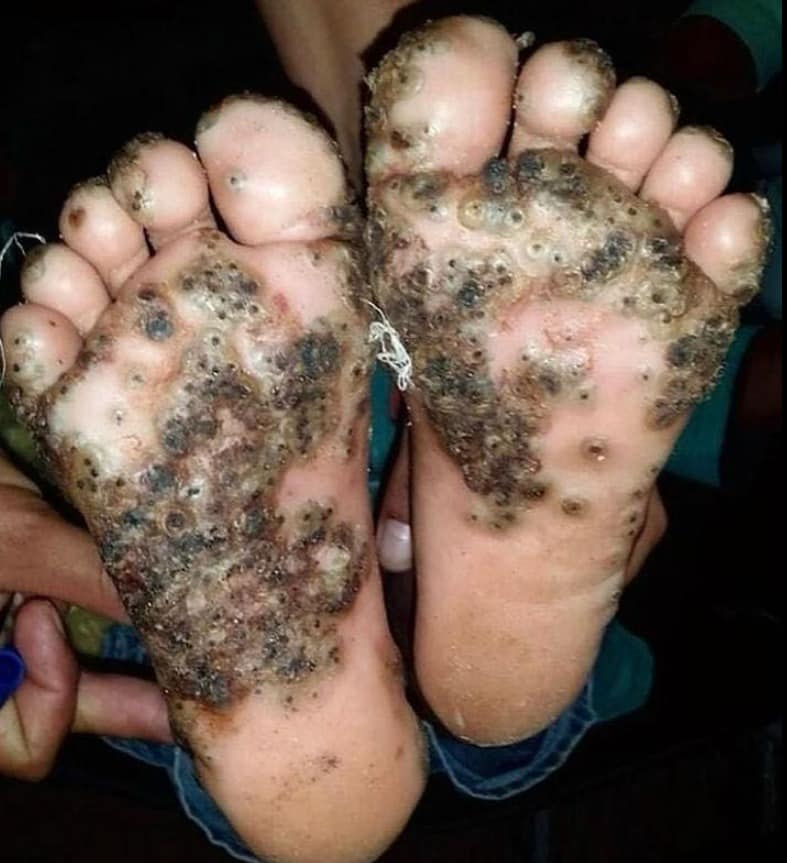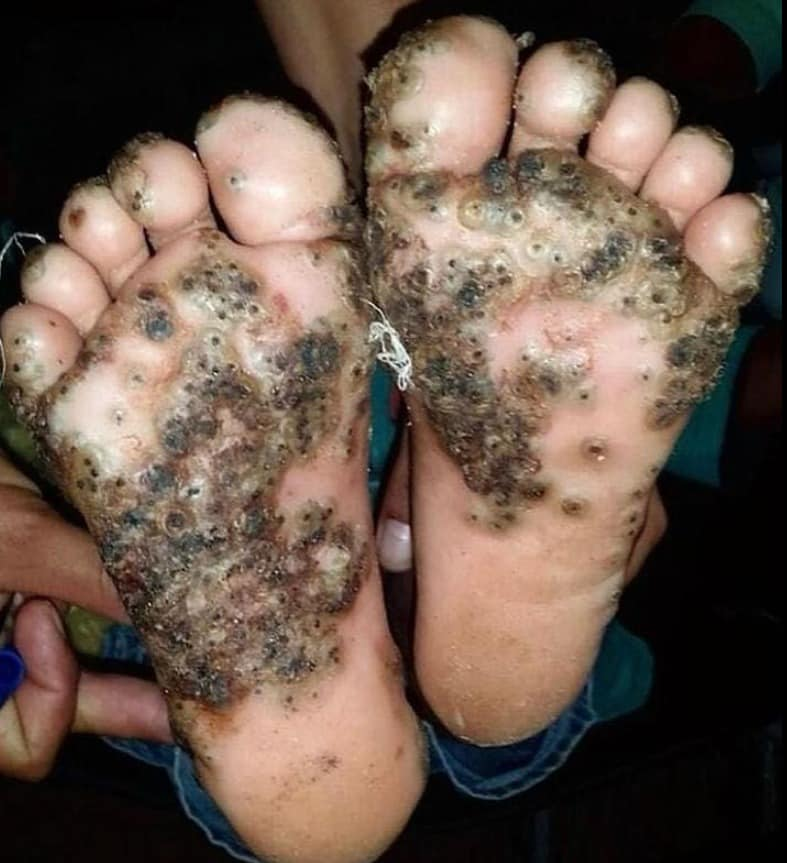Tungiasis is a little-known yet serious parasitic skin infection caused by the Tunga penetrans flea—commonly known as the sand flea, jigger, or chigoe flea. This tiny insect burrows into human skin, often targeting the feet, causing intense itching, swelling, and even severe infections if left untreated. Although it may seem like a minor nuisance, tungiasis can lead to dangerous complications, including ulcers, gangrene, and secondary infections.
If you’re someone who enjoys walking barefoot on tropical beaches or lives in an area where sand fleas thrive, understanding tungiasis is crucial for prevention and early treatment. Let’s explore where it occurs, how it manifests, and what you can do to protect yourself.

Where Does Tungiasis Occur?
Tungiasis is mainly found in tropical and subtropical regions where warm climates and sandy environments provide ideal breeding grounds for the Tunga penetrans flea. Some of the most affected areas include:
- Africa – Countries like Nigeria, Kenya, and Uganda have frequent cases.
- South America – Brazil, Colombia, and Venezuela report many infections.
- The Caribbean – Tourists visiting sandy beaches in Haiti, the Dominican Republic, and Trinidad & Tobago may be at risk.
- Parts of Asia – Some rural communities in India and Southeast Asia face occasional outbreaks.
This parasitic flea is often found in sandy areas, rural villages, beaches, animal shelters, and poorly maintained floors. Those who walk barefoot or wear open-toed footwear are at higher risk, as the flea burrows into exposed skin upon contact.
Symptoms of Tungiasis: The Telltale Signs
The symptoms of tungiasis develop gradually after the flea burrows into the skin. Here’s what to look out for:
1. Itching and Pain
Initially, you may experience a tingling or burning sensation in the affected area, followed by itching that worsens as the flea grows inside the skin.
2. Small Black Spot on the Skin
The first visible sign is a tiny black dot at the site of infection, indicating the flea’s entry point.
3. Swelling and Redness
As the flea feeds on blood and expands, the surrounding skin becomes inflamed, swollen, and tender.
4. White Ring Formation
A raised white halo often appears around the entry site—this is a clear sign that the flea has begun laying eggs.
5. Secondary Infections
If untreated, the lesion can become ulcerated and infected with bacteria, leading to pus-filled sores, severe pain, and even fever. In extreme cases, multiple fleas can burrow into the feet, causing significant mobility issues.
How to Treat Tungiasis?
If you suspect you have tungiasis, early treatment is essential to prevent complications. Here’s what to do:
1. Flea Removal
A healthcare professional can carefully extract the flea using sterile tools like tweezers or a scalpel. Never try to squeeze it out yourself, as this can lead to incomplete removal and infection.
2. Disinfect the Area
After removal, the wound should be thoroughly cleaned with antiseptics like iodine, hydrogen peroxide, or rubbing alcohol to kill any remaining bacteria.
3. Apply Antibiotic Ointment
Topical antibiotics help prevent secondary infections, especially in unsanitary conditions. A doctor may also prescribe oral antibiotics if the infection is severe.
4. Keep Feet Clean and Dry
Regularly washing and drying your feet reduces reinfection risk. Wearing clean socks and shoes also helps prevent further exposure.
5. Pain Management
Over-the-counter pain relievers like ibuprofen or acetaminophen can help alleviate discomfort and reduce inflammation.

How to Prevent Tungiasis?
The best way to avoid tungiasis is through proper preventive measures. Here’s how to stay safe:
✅ Wear Shoes at All Times
Always protect your feet with closed-toe shoes or thick sandals, especially in sandy or infested areas. Walking barefoot dramatically increases the risk of infection.
✅ Use Natural Repellents
Applying coconut oil, neem oil, or insect repellents containing DEET can help keep sand fleas at bay. These natural oils create a protective barrier on the skin.
✅ Maintain Hygiene and Cleanliness
Regularly sweeping and sanitizing floors, particularly in rural homes, can reduce flea populations. If you have pets, ensure their sleeping areas are clean and flea-free.
✅ Check Your Feet After Travel
If you’ve been to a high-risk area, inspect your feet for unusual bumps or black dots. Early detection can prevent a full-blown infection.
When Should You See a Doctor?
While mild cases of tungiasis may resolve with proper care, some situations require medical attention. Seek a doctor if:
🔺 The swelling and pain worsen despite home treatment.
🔺 You notice multiple burrowed fleas in the same area.
🔺 The wound becomes infected with pus, a foul smell, or severe redness.
🔺 You develop fever, chills, or signs of a systemic infection.
Ignoring these warning signs can lead to dangerous complications like gangrene, tetanus, or deep-tissue infections, especially in individuals with weakened immune systems.
Final Thoughts: Protect Your Feet from Tungiasis
Tungiasis is a preventable yet potentially serious infection that often goes unnoticed until symptoms become severe. This parasitic flea thrives in warm, sandy environments, targeting those who walk barefoot or have frequent contact with infested areas.
By wearing shoes, using natural repellents, and maintaining good hygiene, you can significantly reduce the risk of infection. If you suspect tungiasis, early treatment is crucial to prevent complications.
Have you ever heard of this condition before? Next time you’re at the beach or in a tropical area, protect your feet and stay safe! 👣💙